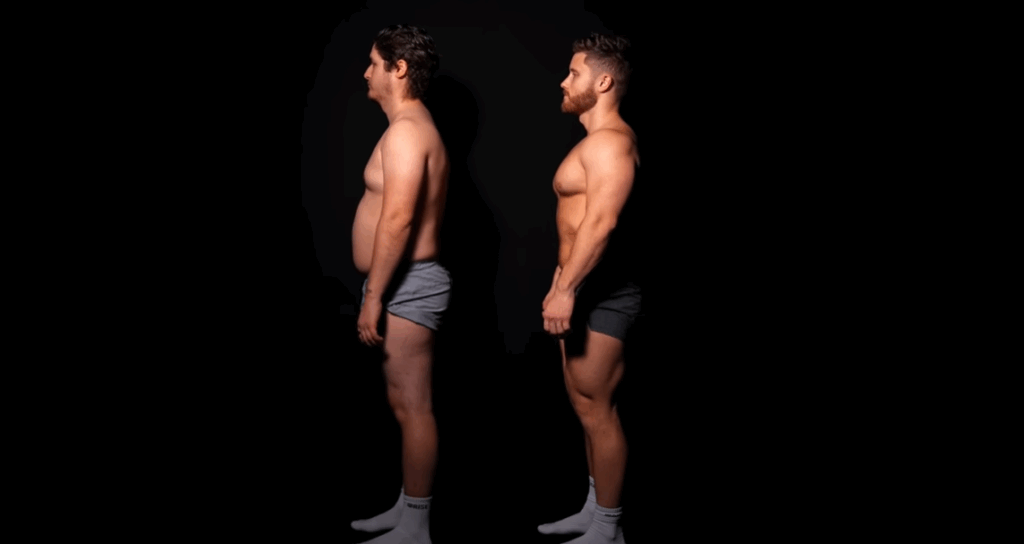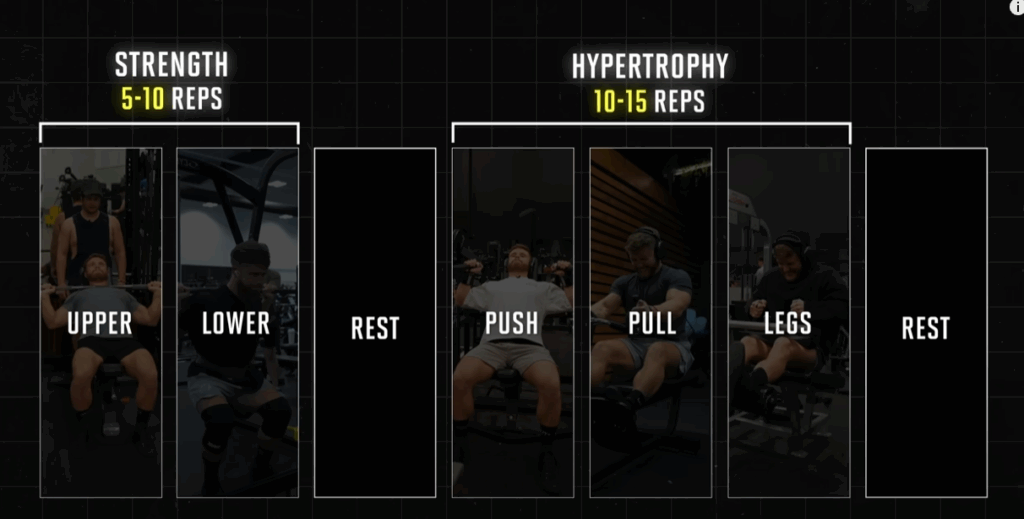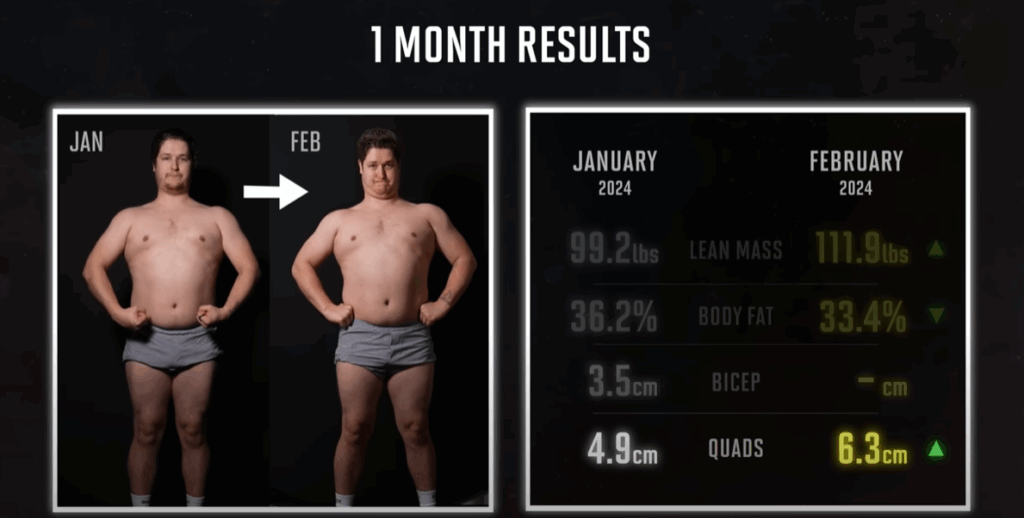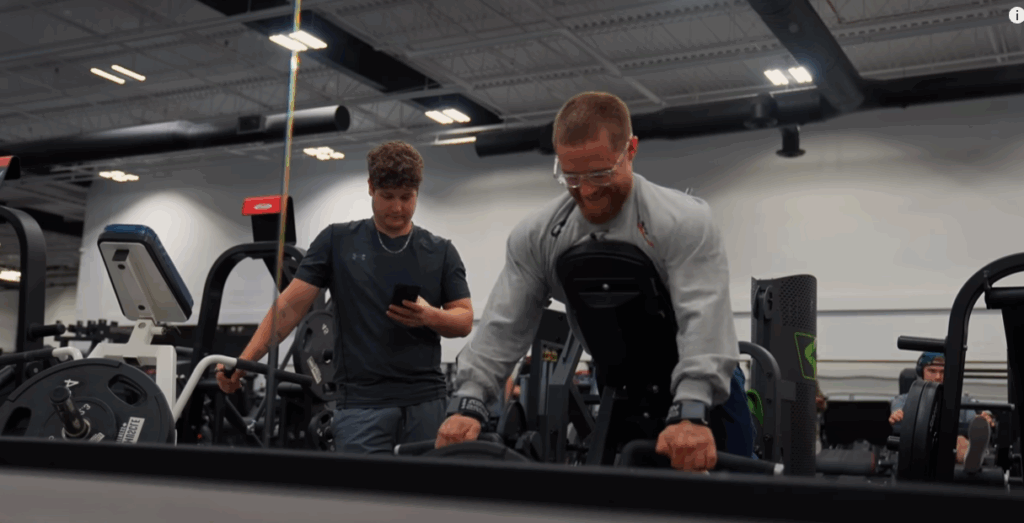The Ultimate One-Year Natural Bodybuilding Experiment: Can You Still Build Muscle After 15 Years?
If you’ve been training naturally for over a decade, you’ve probably asked yourself: Have I reached my genetic limit? That elusive “natural ceiling” is something every experienced lifter wonders about. To find out the truth, I committed to a rigorous year-long experiment—tracking every workout, monitoring every calorie, and applying the most science-backed training principles. To make things even more compelling, I brought along my untrained brother to follow the exact same plan.

Two Subjects. One Goal. Zero Excuses.
I’ve been lifting for over 15 years. My brother Brad, on the other hand, had never touched a barbell. He shares similar genetics and height, making him the perfect control subject to measure how beginners compare to seasoned lifters on the same optimized training and nutrition program.
Before starting, we established baselines using DEXA scans and ultrasound imaging to measure body fat percentages and muscle thickness. I clocked in at 15.8% body fat and 132.7 lbs of lean mass. Brad, meanwhile, was sitting at 36.2% body fat—significantly above average—with no resistance training experience.
Hypothesis: Can Experience Still Yield Gains?
I personally believed I hadn’t truly maxed out my natural potential. While visible progress had plateaued, I suspected that smarter, more intense training could push the limits further. My goal? Add 4 pounds of lean muscle in a year. For Brad, I predicted double that—8 or even 9 pounds—thanks to the notorious “newbie gains” phase.

The Training Plan: Optimized and Ruthless
Our training followed a hybrid split: upper-lower workouts for strength on Mondays and Tuesdays, then a push-pull-legs hypertrophy cycle Thursday through Saturday. Wednesday and Sunday were reserved for recovery.
Here’s what made this year different:
- Training to failure: I pushed every final set of every exercise—yes, even compound lifts—to mechanical failure.
- Only optimal movements: If a movement wasn’t biomechanically ideal for muscle growth, we replaced it.
- Progressive overload with precision: All reps, sets, and loads were logged meticulously. Weekly improvements were non-negotiable.
Brad followed the same plan but started at reduced volume—one set per exercise in week 1, scaling up to three sets by week 3.
Nutrition: Science in Every Bite
We consumed the same diet daily for strict control:
- Calories: ~3,000/day
- Protein: 150g
- Carbs: 410g
- Fats: 85g
Brad, despite his high body fat, wasn’t placed in a deficit. That would’ve introduced a variable. He bulked alongside me—even though it wasn’t ideal for his body comp goals.

Everything was tracked via a macro-tracking app, and surprisingly, the process became second nature within days.
Month 1 Results: The Power of New Stimuli
After just 4 weeks:
- Brad gained 12.7 lbs of lean mass and dropped nearly 3% body fat.
- I added 3 lbs of lean mass, with a slight uptick in body fat to 16.7%.
Much of Brad’s gain was likely water and glycogen from starting creatine, but the transformation was visible. We both felt an adrenaline rush of motivation.
Six-Month Check-In: Gains and Lessons
By mid-year:
- Brad had added 13 lbs of lean mass and reduced body fat to 35%.
- I gained 4.5 lbs of lean mass—but also 11 lbs of fat.
The results exposed the cost of aggressive bulking. In hindsight, a leaner surplus might’ve yielded similar muscle gains with less fat. Still, the experiment continued.
Recomp Phase: Can You Build and Cut Simultaneously?
For the next three months, we aimed to recomposition—adding muscle while maintaining weight:
- Calories: 2,800/day
- Goal: Maintain weight while improving body composition
While Brad continued to progress—dropping 3.5 lbs of fat—my lean mass dipped by 0.8 lbs. Likely, maintenance calories just weren’t enough stimulus for growth at my experience level. Still, I retained most of my muscle, even in a calorie-neutral phase.
Unfortunately, I also suffered a partial knee tendon tear during a strength test, forcing me to adjust lower-body training significantly.

The Final Phase: Cutting Down and Dialing In
With three months remaining, it was time to shed the fat:
- Calories: 2,200/day
- Protein: 190g
Brad and I pushed through the cut with discipline. Despite training around my injury and reduced intensity on some compound lifts, we stayed consistent. We were laser-focused on the ultimate question:
After returning to my starting body weight, will I still have more muscle than before?
Final Results: Did It All Pay Off?
- Brad’s transformation was astounding: +10 lbs lean mass, –10 lbs fat. His heart health even improved, according to his sleep tracker. His strength metrics skyrocketed.
- My final numbers: +2.7 lbs of lean mass, –2 lbs of fat from baseline. While I peaked at 4.5 lbs of muscle gain during the bulk, I retained over 60% of it through the cut. For an advanced natural lifter, this is an excellent result.
DEXA and ultrasound scans confirmed meaningful gains in my chest, back, and right quad. My injured left leg showed some regression—understandably—but my biceps even grew during the cut.
Final Takeaways: Natural Limits Can Be Pushed
The year-long grind revealed key insights:
- Beginners can make rapid transformations, even while eating in a surplus.
- Experienced lifters can still build muscle, but need careful planning and relentless consistency.
- Tracking everything matters—from food to recovery.
- Injuries are part of the journey, but shouldn’t derail your goals entirely.
- Visual progress is just one benefit—Brad saw massive improvements in mental health and confidence.
As for steroids? I’m still staying natural. This project proved I can make measurable gains without performance enhancers.
My next goal? Drop below 8% body fat and achieve peak visual conditioning.
Want to transform your own physique?
Run the same program we used—tailored to your level. Whether you’re a beginner or an advanced athlete, this system is proven, data-backed, and results-driven. And if you’re ready to dial in your nutrition, try MacroFactor, the app we used to track every single meal for a year.
Remember: it’s not just about lifting weights—it’s about lifting with purpose.



